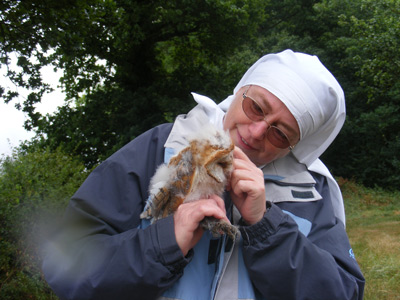
Helping Barn Owls - What Can You Do?
Sightings
If you have seen a Barn Owl in Rushcliffe, please let us know; email Howard at tyto@uwclub.net
If you think the owl might be feeding or breeding on your property you may also wish to consider the following measures:
Improve Feeding Habitat
- The main prey of the Barn Owl is the Short-tailed (or Field) Vole which lives in rough grassland.
- Consider leaving areas of grassland uncut around field margins, alongside woods, streams and ditches, in set-aside or in field corners.
- Grassland should be topped in September with the mower at maximum height. Up to 25% of set-aside can be left un-mown each year.
- There is lots of information on how make your land Barn Owl friendly at the Barn Owl Trust website.
Improve Breeding Success
- Protect existing nest sites by retaining trees with suitable holes. Avoid alterations to buildings where owls are known to be present.
- Be particularly careful not to disturb nests. It is an offence under the Wildlife and Countryside act 1981 to willfully disturb breeding Barn Owls. New nesting sites can be created by providing nest boxes on poles, in trees or within buildings.
Contact Us for advice on design and siting of Barn Owl boxes. We might consider your site deserving of one of ours!
Use Owl-friendly Rodenticides
- Barn Owls are at risk from rodenticides which they eat along with their prey.
- The ‘second generation’ rodenticides such as brodifacoum, bromadiolone and difenacoum are far more toxic to owls than ‘first generation’ poisons like warfarin and should not be used where owls are known to be present.
- For more information see the pdf leaflet on Rodent Control at the Barn Owl Trust website.
Reduce Drownings
- Barn owls are at risk from drowning in steep-sided water tanks and troughs.
- This can be prevented by placing a plastic mat or supermarket bread tray in the container as a floating raft.
- Livestock soon learn to push the raft down to drink.
- See the Barn Owl Trust website for details of a more durable method of preventing drowning.



